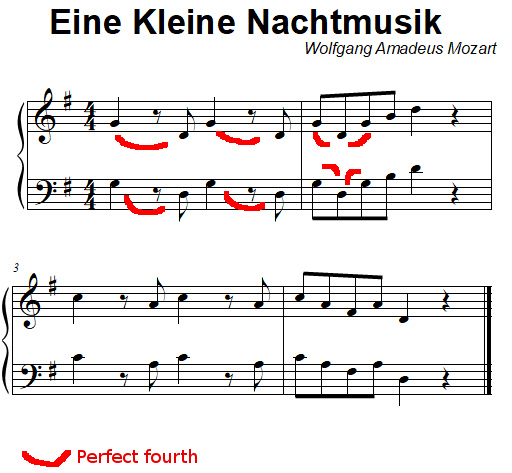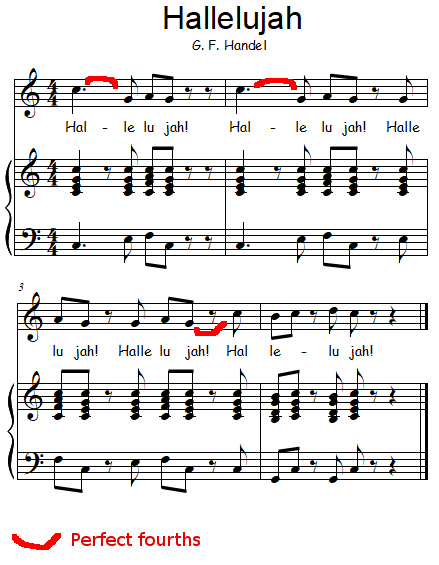In music theory, a perfect fourth is an interval that has five half steps 

The perfect fourth requires that:
- The interval must be a perfect fourth interval (four note names between the first and the last).
- The interval must have five half steps.
What does a perfect fourth look like?
Here is an example of a melodic perfect fourth (two music notes in a melody) and a harmonic perfect fourth (in a chord):

How to recognize a perfect fourth?
Rule of music theory: All intervals in a major scale starting with the tonic (degree I) are either major or perfect, and only unison, octave, fourth and fifth are perfect (the others are major).
Example with the interval A♭ / D♭:
Let's take the A flat major scale to have A♭ as the tonic:

From the rule stated above, it becomes clear that A♭ / D♭ is a perfect fourth.
Inversion of the perfect fourth
The inversion of the perfect fourth is the perfect fifth.
Here is an example of a perfect fifth:

Musical examples of perfect fourth
Eine kleine Nachtmusik, Mozart
One of the famous examples of the use of perfect fourths can be found in Eine kleine Nachtmusik (a Little Night usic) by Mozart:

Handel's Hallelujah Chorus
Handel's Hallelujah Chorus start with a perfect fourth:

Interval identification game
You will find this interval in my Intervals identification game:


